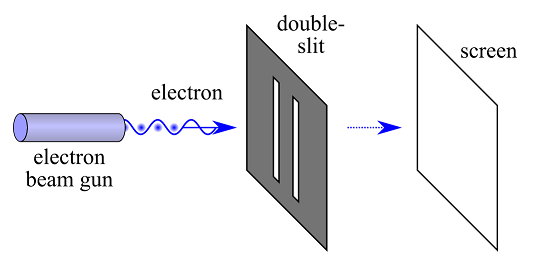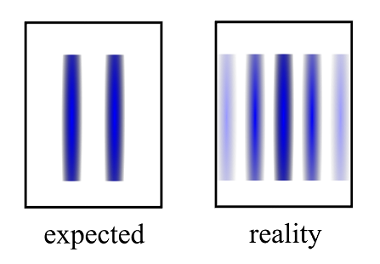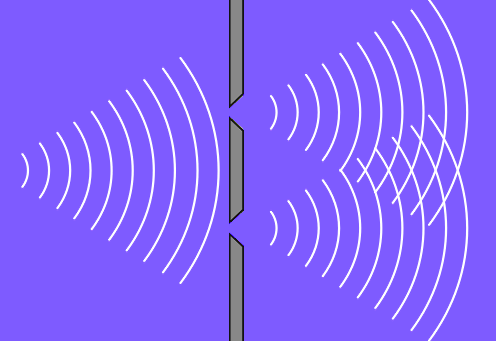The Double Slit Experiment
The double slit experiment is an important experiment in quantum physics. It showed that sometimes particles could act like "waves" moving though space, while other times they behaved as expected. To understand the difference, let's look at the experiment.
The experiment setup is as follows: an electron beam gun and a special screen sit across from each other. The electron beam gun can fire electrons at the screen, and they will leave an imprint wherever the hit. Between them there is a thin wall with two slits. When the beam is turned on, electrons fly towards the slits. Each electron will either pass through a slit or hit the wall. Those that go through the slits will hit the screen on the other side, leaving an imprint.

What would happen if the electrons acted like particles in classical mechanics? They would create two bands on the screen, an impression of the two slits. Something strange happens though: the particles leave several bands on the screen, fading from the center. What's going on?

Let's imagine a similar experiment. Suppose you had a pool of water, and you placed the double slit wall in the middle. If you dropped a pebble on one side of the wall, it would create a wave in the water. What would happen when this wave hit the wall? Unlike a particle, which can only travel through one slit, the wave would travel through both slits. It would split into two waves.
When these waves meet, they interfere with each other. Two high points or two low points will combine together, while a high and a low point will cancel out. If you recorded the height of the waves, you would find they form multiple bands that fade out from the center—just like the electrons. These bands form what's called an interference pattern.

When the double slit experiment was first performed, scientists were puzzled by this result. Electrons, which they thought were particles, seemed to be acting like waves. To find out what was happening, they placed a device near the slits to detect each electron as it went through. But when they ran the experiment again, the interference pattern was gone! The electrons simply left an impression of the slits on the screen.
This experiment demonstrates two important ideas in quantum mechanics. The first is wave-particle duality. Sometimes subatomic particles will behave as expected, while other times they will act like waves. Quantum physics uses both models interchangeably.
As strange as wave-particle duality is, the second effect is even stranger: the observer effect. By trying to observe the particles, the scientists changed the outcome of the experiment. The mystery of the observer effect and why it occurs is central to quantum physics.